Politics & Economy
Lessons from the Việt Nam war (Part 1)
Published on
By
Tạ Văn Tài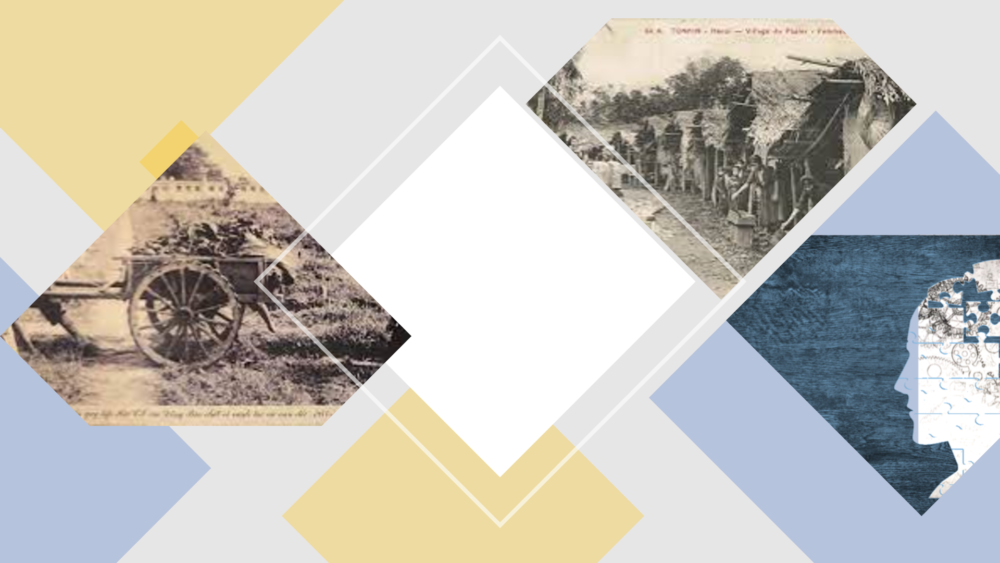
Lessons from the Việt Nam war (Part 1, Part 2, Part 3)
Lessons? For whom? They are different for the different parties. An American might be tempted to fix on who “lost” Vietnam – Congress, the executive, the military or the media. A South Vietnamese would surely name the U.S. pullout as a major factor in his country’s defeat and draw some obvious conclusions. As for the victorious North Vietnamese, Foreign Minister Nguyễn Cơ Thạch once gave an arrogant reply to Robert McNamara’s proposal for a lessons-learned symposium: “We won the war; why would we need to learn any lesson from it?” Yet the Communists, it can be said, lost the peace for the first decade after the war ended in 1975, because they suffered an embargo, were denied normalization with the U.S., and presided over a backward country that kept their people’s lives miserable for many years in comparison with other Southeast Asian nations.
For the Communists, too, there are lessons to be learned. Despite an autocratic regime which does not tolerate political dissent, and which abuses human rights, perhaps they have learned some lessons. According to the World Bank in 2018, for example:
“Vietnam’s development record over the past 30 years is remarkable. Economic and political reforms under Đổi Mới [an economic reform program], launched in 1986, have spurred rapid economic growth and development and transformed Vietnam from one of the world’s poorest nations to a lower middle-income country.”[i]
Despite the complexities, I will try to answer the lessons-learned question as a conscientious historian who was a member of South Vietnamese society and is now a grateful U.S. citizen, and as a person who looks back at his motherland with his best wishes for the people there, even as he criticizes certain Vietnamese government policies. I will try to take the long view of history.
I see five lessons from the Vietnam War of 1960 to 1975, so called to distinguish it from the 1945 to 1954 Indochina War.:
- First, changing national interests in the Vietnam war led to drastic changes in the war’s nature and the strategy needed to fight it successfully.
- War should end with a negotiated peace, and with a political solution that sees an end to the intransigence that is appropriate for war but not for peace.
- The people are the final arbiter on a war’s conduct. War should be referred to the people as the ultimate arbiter. War should not be between armed forces directed solely by generals and their leaders, but should be supported by the population as a whole, who should be consulted when war is declared and when peace is negotiated.
- If peace is to be enduring, war should end with reconciliation.
- South Vietnamese and American Presidential leadership was one factor in the Vietnam War’s outcome.
Hindsight, of course, makes the war’s lessons easier to understand. But a scholar’s well-researched views on the lessons of history can still serve policy-makers well, even during urgent deliberations, because they can enable sound solutions with fewer missteps. Confucius, Sun Yu, Aristotle and others contributed by their advice to wise statecraft, just as modern European and American governments benefit from the work of think tanks and universities. Thus, the utility of the exercise we are engaged in today. Here are my five lessons from the Vietnam War:
- The first lesson: changing national interests in the Vietnam war led to drastic changes in the war’s nature and the strategy needed to fight it successfully. In Vietnam, a civil war became uncontrollable because it became an internationalized proxy war, with outside powers intervening to suit their interests, and with the United States then abandoning the fray because its interests had changed .The saying of Lord Palmerston “nations have no permanent friends, only permanent interests” has to be modified as “nations have no permanent friends and only a few permanent interests” .[ii]
Vietnam’s protracted, bloody Communist-nationalist civil war became an internationalized conflict promoted by the two big power blocs, and the two sides in the small country of Vietnam were touted as a vanguard of the Socialist Bloc and the bulwark of the Free World. Both sides depended on the big powers’ political, military and economic support. Once the United States started cooperating with China after Kissinger’s and Nixon’s trips to Beijing, the Americans had no more national security interest in devoting resources to defend South Vietnam.
So the U.S. abandoned South Vietnam. It made many concessions to North Vietnam (the Democratic Republic of Vietnam, or DRV) in the Paris Peace Accords of 1973, agreeing to a “leopard skin” ceasefire in South Vietnam (the Republic of Vietnam, or RVN) that left North Vietnamese troops in place, jeopardizing the South’s survival, and aiming to
bring home American troops and prisoners of war to satisfy the American public. At the same time, the U.S. failed to replace lost South Vietnamese arms and ammunition on a one-for-one basis, as promised, or even to permit South Vietnam to use the American Aid Fund (Quỹ Đối Giá) to pay the salaries of its soldiers and police.
When North Vietnam’s all-out invasion caused the South to collapse in 1975, Secretary of State Kissinger hid from Congress the promise of President Nixon in his letters to President Thiệu to come to the rescue of South Vietnam with B52 bombing and arms aid; thus, both Congress and President Ford talked at the end only about the evacuation of the Americans from Vietnam. U.S Ambassador Graham Martin, visiting Washington at that time, condemned the American stance. “I think all over the world, everyone has reached a conclusion very harmful to us. That is it would be better to be an ally of Communism than to have the woe of being an ally of the United States.”
The South Vietnamese leaders, of course, should have been aware long before 1975, of the impermanency of big-power support and an eventual U.S. withdrawal due to changing national interest. The South Vietnamese leadership might have guessed that although in 1954 the U.S. wanted to replace France in South Vietnam as part of the containment policy against Communist encroachment in Asia, and although the Americans had supported the Ngô Đình Diệm regime as a “bulwark against Communism in Southeast Asia” and called President Diệm the “Churchill of Vietnam,” in later years there would likely be an American disengagement due to war weariness among the public and the surging anti-war movement. The result was President Johnson’s loss of hope and his decision not to run for re-election in 1968.
I began around that time to express, as a scholar-professor, my worry of the impact of decreased United States support for relevant South Vietnamese officials, such as the colonels and generals who studied at the National Defense College in Sài Gòn.[iii]
With the U.S. disengagement and drastically fewer supplies, the South Vietnamese had to face by themselves the continued civil war waged by the Vietnamese Communists, who launched their final offensive with maximum assistance in arms and transportation from China and the Soviet Union. After the resignation of President Thiệu in late April 1975, the successive South Vietnamese governments of Trần Văn Hương and Dương Văn Minh tried to negotiate a cease-fire, as if the civil war could be settled among “Vietnamese brothers,” with the encouragement and good offices of French Ambassador Merillon, trying to carry on for the fading Americans.
But the victorious North Vietnamese forced the Dương Văn Minh government to accept unconditional surrender on April 30, 1975. The political compromise that Thiệu could have pursued with the signing of the Paris Accords in 1973 was no longer available in the face of the now-lopsided imbalance of power (Thiệu himself had previously said that South Vietnam’s military potential had decreased by 60 percent). The South Vietnamese were now aiming mainly at a short humanitarian interregnum for those who feared for their lives under the Communists to leave Vietnam, as in 1954, when
hundreds of thousands of refugees moved from the North to South Such a cease-fire was also meant to avoid the burial of Sài Gòn under a sea of firepower (biển lửa) at the hands of Communist troops..[iv]
The Americans, even after abandoning South Vietnam as a result of their changing view of their national strategic interests, did not abandon their humanitarian instincts. In 1975, President Ford proposed to Congress that the U.S. fund the rescue of Vietnamese refugees from inside Vietnam or from the South China Sea, and bring them halfway around the world to the United States, welcoming them to their second homeland at a time when they might have been regarded as simply the flotsam and jetsam of the Vietnam War. For this, Vietnamese in the United States will always thank the American people.
On the issue of whether the Vietnam War was a civil war or an international war by proxy, the answer is not a simple one. It was first a civil war, beginning, from 1945 and before the French attempted to return to Indochina. Then, gradually, it was internationalized by the British, the Nationalist Chinese, the French, the Americans and finally the People’s Republic of China, all injecting into Indochina their concern for their own national interests. Finally, after the 1973 Paris Peace Accords and the withdrawal of American troops and the return of American prisoners, the war returned to its civil-war status.
After the Việt Minh under Hồ Chí Minh seized power in August 1945, there was, early in September, some friction between the Việt Minh and the Vietnamese Nationalist forces. The latter accused the Việt Minh of being Communists; the Việt Minh in turn denounced their opponents — the Việt Nam Cách mệnh Đồng minh Hội (VNCMĐMH, or Vietnam Revolutionary Alliance) and the Việt Nam Quốc Dân Đảng (VNQDĐ, or Vietnam Nationalist Party) — as reactionaries. These Nationalist forces planned to rely on the support of China’s Kuomintang (the Nationalist Party of Chiang Kai Shek) – support they had enjoyed since their exile to China after the failed rebellion of Nguyễn Thái Học in 1930 — in their plot to overthrow the Provisional Coalition Government of Vietnam (Chính phủ Liên hiệp Lâm thời Việt Nam), formed by Hồ Chí Minh on January 1, 1946, even though they already had a few representatives inside that government.
But these Nationalist parties could not carry out their plan; they lacked unity and had no popular base inside Vietnamese society due to their years in exile. They had only the hoped-for support of the corrupt Chinese generals who were coming to disarm the Japanese. Moreover, in organizing demonstrations and countering propaganda, the Vietnamese Nationalists were less skilled than the Việt Minh, who had abundant experience in these matters since Hồ Chí Minh, with the approval of Nationalist Chinese General Zhang Fakui, returned from China to Vietnam in 1941 (under the name of the Vietnam Revolutionary Alliance, of which the Việt Minh was a member).
Moreover, the Việt Minh had the support of Chinese Nationalist generals Lu Han and Tieu Van, whom they bribed with opium and gold collected from the people, and these
Chinese generals forced the Vietnamese Nationalists to stay, albeit reluctantly, in the Communist-dominated Provisional Coalition Government of Vietnam. The Việt Minh also had support from the Third Communist International and the Office of Strategic Services (OSS), the wartime intelligence agency of the United States. The Việt Minh organized meetings, marches and exhibitions with pictures of their cadre killed by the Nationalists.
There was some restraint. A Communist party member asked Hồ Chí Minh, “Dear Uncle, why let those murderous traitors live? Please just give the order and we will liquidate all of them in one night.” Ho just smiled. ”If there was a mouse in this room, would you throw a stone at it or try to catch it? Using a stone will break precious things. To achieve great work, we must have farsightedness.”
The Nationalist-Communist friction might conceivably have stopped right there, allowing Hồ Chí Minh and the leaders of the Nationalist parties to avoid civil war. In previous times, as exiles in China, the two had shared dangers, and Nationalist leaders Nguyễn Hải Thần and Vũ Hồng Khanh had helped save the life of Hồ Chí Minh by intervening in Liuzhou, China, with the Nationalist Chinese general who detained him. After capturing power in the August 1945 Revolution, Hồ Chí Minh tried to win the cooperation of the Nationalists for the new government before the returning French sowed disunion.
Hồ embraced Nguyễn Hải Thần of the Vietnam Revolutionary Alliance (Việt Nam Cách Mệnh Đồng Minh Hội) and implored the Nationalist parties to cooperate with him. The Provisional Coalition Government of Vietnam included representatives of the Nationalists, such as Vũ Hồng Khanh of the Vietnam Nationalist Party (Việt Nam Quốc Dân Đảng, or VNQDĐ), Nguyễn Tường Tam of the Đại Việt (Greater Vietnam) group, and Nguyễn Hải Thần of the Vietnam Revolutionary Alliance. The government, if coupled with Hồ Chí Minh ‘s restraining his Communist cadres from assassinating the Nationalist leaders, could have avoided the civil war.[v]
Unfortunately, later in 1946, while Hồ Chí Minh was attending the Fontainebleau Conference in France and at the same time trying to invite Nationalist intellectuals in France to come home to help Vietnam, lower-level Communist leaders back in Vietnam, such as Võ Nguyên Giáp, then Minister of Interior), ordered Việt Minh assassination squads (Bạn ám sát) to kill the Nationalists and destroy their headquarters and hinterland bases. By that time, the Nationalists no longer had the protection of the Nationalist Chinese generals. The Fontainebleau Agreements were a proposed arrangement between France and the Vietminh, made in 1946 before the outbreak of the First Indochina War. The agreements affiliated Vietnam under the French Union. At these meetings Ho Chi Minh pushed for Vietnamese independence, but the French would not agree to this proposal.
In the North, the Nationalist leaders who were killed or made to disappear were Ly Dong A, and Khai Hung and Truong Tu Anh, who set the example of an ascetic life and who slept in a bed made out of a window, according to his assistant, Bùi Tường Huân, who was later a Sài Gòn Law School professor), As for Vũ Hồng Khanh and Nguyễn Hải Thần, they had to flee to China.
In the South, leaders of the Trotskyite Fourth International such as Phan Văn Hùm, Tạ Thu Thâu , Lương Đức Thiệp, Phan Văn Chánh, and Trần Văn Thạch were killed or made to disappear. Non-Communist leaders were also liquidated. These included Hồ Vân Nga, Huỳnh Vân Phương, Dương Văn, Hồ Vĩnh Ký, Henriette Bùi Quang Chiêu, and Huỳnh Phú Sổ and other Cao Đài and Hòa Hảo notables. When the South’s National Assembly met on October 28, 1946, only 291 of the 444 representatives were present, and only 37 of the 70 representatives of the Vietnam Nationalist Party and the Vietnamese Revolutionary Alliance came, the others having been arrested. Later on, the 34 attending members also disappeared. Consequently, the Nationalist parties took an anti-Communist path. Some ran for cover (“chùm chăn”) i.e., became inactive, and, later, many adopted the Bảo Đại solution, joining the camp of the ex-Emperor.
I cite this long list of victims of the Việt Minh’s liquidation campaign to provide evidence for an objective historical evaluation of the Leninist terrorist strategy the Communists used to monopolize political power, which was the root cause of Vietnam’s civil war and involved the loss of leaders who could have contributed to the nation’s development.
This terrorist strategy was not necessary for the Việt Minh ‘s ascendancy, which could have been achieved via electoral majority — as in Hitler’s takeover of the Weimar regime or Putin’s hold on power. The terrorist strategy only damaged the Việt Minh ‘s status as the standard-bearer for Vietnam’s struggle for independence against the French. After many French provocations, it was only on December 28, 1946, that the Vietnam Resistance Government, the successor to the Provisional Coalition Government, withdrew from Hanoi into the hinterland.)
It is also true that the Provisional Coalition Government of Vietnam could have continued with the sharing of power between Nationalists and Communists without changing a civil war into an internationalized war by proxy, if there had been no intervention in Vietnam’s political and military arenas by France, Great Britain and the Republic of China.
As for the United States, it could have aided Vietnam’s struggle for independence under the Provisional Coalition Government of Vietnam if it had intervened earlier and more properly in accordance with President Roosevelt’s desire to prevent a French return to Vietnam. Once Roosevelt had passed away and was replaced by President Truman, the U.S. ignored Hồ Chí Minh’s eight letters to U.S. Presidents and Secretaries of State requesting support against the French attempt to return to Vietnam. Truman thought the U.S. needed France in the incipient Cold War against the Soviet Union.
French forces were helped in their reoccupation of South Vietnam by the British army, which was in Indochina to disarm the Japanese. Pursuant to the Chunking Agreement of February 28, 1946, between France and the Republic of China, which provided among other things for disarming the surrendering Japanese troops in North Vietnam, France brought military units to North Vietnam. U.S. vessels brought the French expeditionary forces to Hải Phòng and Sài Gòn, that is, both to North Vietnam and to the South.
By way of background, on March 6, 1946, France and North Vietnam concluded a Preliminary Agreement in Fontainbleau, France, whereby France recognized North Vietnam as a “free state” within the French Union with limited powers, and North Vietnam agreed “to receive the French army in friendly fashion” in relief of Chinese forces. The agreement was signed by Hồ Chí Minh representing North Vietnam, Vũ Hồng Khanh, the delegate of the North Vietnamese Council of Ministers, and Jean Sainteny, the delegate of Admiral Georges Thierry d’Argenlieu, the High Commisioner of France in Indochina.[vi]
On September 14, 1946, in Paris, France and North Vietnam issued a joint declaration and concluded a modus vivendi. The joint declaration stated that the Fontainbleau Agreement of March 6, 1946, was still in effect. The modus vivendi provided provisional solutions of urgent problems, including reciprocal recognition of “democratic rights” and property rights, and a cease-fire in Cochinchina, The joint declaration and modus vivendi were signed by Hồ Chí Minh and Minister of Overseas France Marius Moutet.[vii] France sided with the Viet Minh in the latter’s anti-Nationalist activities. France considered the Nationalists’ position extremist, as they had vigorously opposed the Preliminary Agreement, the Joint Declaration and the Modus Vivendi.
For their part, the Vietnamese Nationalists protested Ho’s accommodations with the French by way of Foreign Minister Nguyễn Tường Tam’s absence at the signing of the Preliminary Agreement. They also leveled the serious charge of “traitor” against Hồ, who had to present an explanation in Hà Nội at the Grand Opera House, where he swore, “I would rather die than sell out my country.”
The civil-war character of the Vietnam War was revealed by, among other things, the fratricidal murders in later years, the atrocious land reform of 1953-54 in North Vietnam, and the killing of innocent people in Huế during the 1968 Tet offensive.
As for the internationalization of the Vietnam War, we must say that at the start it was not a war by proxy, because the Việt Minh government, on its own initiative, resisted the French attempt to take back Vietnam. This was a war of national liberation in which all Vietnamese patriots participated, not one in which the Soviet Union or Communist China entrusted the fighting to the Vietnamese. (Stalin, in fact, still treated Hồ Chí Minh badly, as revealed in Kruschchev’s memoirs; and Mao’s forces were still busy fighting Kuomintang China and had not yet reached the border of Vietnam.) French President François Mitterrand visited the unified Vietnam in 1993.. Speaking at Điện Biên Phủ, he regretted that France had made the mistake of returning to re-colonize Vietnam in a war the Vietnamese people considered a war of national liberation.
Later, the French commander-in chief in Indochina, General Jean de Lattre de Tassigny, saw that the 280,000 men of the French Far East Expeditionary Corps could not do the job by itself. He thus allowed the Nationalist Vietnamese in the Bảo Đại camp to have a 70,000-man army, which was mobilized by the French. Before then, the French colonialists wanted to fight the war by themselves. In 1946, they brought Emperor Duy Tân from his place of exile to Paris, but his plane crashed in Africa under suspicious circumstances. Later, the French debated brushing aside Bảo Đại and using Queen Nam Phương as Regent, but finally settled on the Bảo Đại solution.
When in 1954 the Americans replaced the French in Vietnam in support of Ngô Đình Diệm, Vietnam was engaged more fully in a civil war in which each side had its own distinct territory, government, and population. The war, however, became more internationalized and more of a war by proxy. North Vietnam took on the international mission of spreading communism with the help of the Soviet Union and China in addition to the task of struggle for national unification for the Vietnamese. Vietnamese Communist Party General Secretary Lê Duẩn said: “Our fight is the fight for the Soviet Union and China.” South Vietnam, at the same time, was called an outpost of the Free World by some Americans, who entrusted the country with a mission, but a limited one. The Vietnamese were assigned a territorial-defense role only when the war reached its most intense stage.
At the beginning, the U.S. government’s decision to engage in the war was supported broadly by the press and public opinion; thus, the Americans started as advisors, then sent U.S. Army Special Forces, and finally dispatched tactical ground combat troops who, among other things, launched ”search and destroy” operations.
At its peak in 1968, the American military presence was 536,000 men and women on the ground. About 2,700,000 American men and women served in Vietnam from 1957 to 1975 with, in addition, the Navy and the Air Force operating from the 7th Fleet and Thailand.[viii]
In his memoir, South Vietnam’s former ambassador to Washington, Bùi Diễm, described the way the Americans invited themselves into the War in 1965. After field observation visits, U.S. Defense Secretary McNamara and the U.S. Chairman of the Joint Chiefs of Staff asked Diễm to draft a “letter of invitation” requesting American troops for Vietnam, bypassing both the U.S. Congress and the American people. This American self-invitation was buried in the joint communiqué prepared by Diễm , then a minister in the Vietnamese Prime Minister’s Office, to save South Vietnam’s face. Even the then-U.S. Ambassador to Vietnam, General Maxwell Taylor, was taken by surprise. Almost all of South Vietnam’s military and civilian officials opposed the Americanization of the war, just as President Diệm in his tenure had opposed the debarkation in Vietnam of American combat troops. But the Americans came and then, finally, disengaged. Their departure began to happen when rising U.S. casualties appeared vividly on American TV screens, stoking the antiwar movement, first among the young and then more widely, and giving popularity to the idea of withdrawal from the war and the return of American prisoners.
The growing unpopularity in the United States of the war helped give traction to the strategy of Vietnamization within the Nixon administration. By that time, however, even the survival of South Vietnam as a nation-state was no longer of concern to many Americans. The idea of entrusting the war effort to the Vietnamese, with American assistance and war-materiel support for the defense of what some called a bulwark of The Free World, was abandoned by the U.S. after the signing of the Paris Peace Accords, the return of the prisoners of war, and the improved relations with China and the Soviet Union, the main powers on the other side.
A lesson: a small country entrusted with a military role by a big power, or assisted by that power, should think in advance about what to do when the big power abandons it and the small country has to sign a separate peace agreement or resort to some other strategy to defend its national interests. With this in mind, let us look back to 1956. If President Diệm had not regarded as part of his role to be an American-imposed bulwark of the Free World, but had followed a more independent path, he could have begun negotiations with North Vietnam, in accordance with the unsigned Final Declaration on Indochina of July 1954, to organize “free general elections by secret ballot” in 1956 under the supervision of the International Supervisory Commission.[ix] If so, there might have been no Vietnam War, but instead there might have emerged a unified Vietnam wherein Communists and Nationalists had to coexist peacefully, at least relatively so, tolerating setbacks such as assassinations. That solution might be called “A tense peace is better than war,” and could have been a creative way to avoid war. More on this later.
As for the United States, one lesson from the Vietnam War is to avoid sending combat troops to fight a land war that could result in American casualties, lead to antiwar protests at home, and produce a quagmire with no respectable exit. For South Vietnam, that could have meant war-materiel support, but no deployment of ground combat units, as a U.S. contribution to the deterrence of Communist expansion. The tiger fighting for its own survival in its own territory has every incentive to fight for its self-preservation. The U.S. should think out in advance an exit strategy for any conflict in order to satisfy the American public and to counter an enemy’s protracted conflict strategy, such as that of the Chinese Communists under Mao, who talked of a “ten-thousand year war,” or the Islamists of today. This lesson from the Vietnam War concerns the optimum strategy of entering and exiting the war, and not the war’s objective, which was to deter or limit Communist expansion in Southeast Asia. That objective was a valid one, and it succeeded to a degree. Although the domino theory – that other Southeast Asian countries would fall to communism after Vietnam fell ‒ did not happen, the American intervention gave them time to consolidate themselves. There was also a certain psychological domino effect in the area of disrespect for American determination elsewhere in the world after 1975, and it might have contributed, for example, to the detention of American diplomats in Iran. As for the leaders in North Vietnam, they considered themselves revolutionary pioneers in Southeast Asia, became overambitious in their desire to assist other communist parties in Cambodia, Laos, Thailand and elsewhere. According to archives of the Soviet Union, declassified after its dissolution, weapons from Vietnam were delivered to Africa via Cuba.
But Vietnam’s overstay in Cambodia (more than 10 years), after completing the praiseworthy mission of freeing it from the genocidal Pol Pot regime, and its failure to turn power over to the Cambodian people, led Vietnam into a quagmire and earned it China’s hostility for many years. This damaged Vietnam’s security interests and led to the border war launched by China in 1979 to, in the words of Deng Xiao Ping, “teach Vietnam a lesson.” Vietnam’s Cambodian adventure has been called “Vietnam’s Vietnam.”
On the other hand, the U.S., as a big power, overcame its Vietnam syndrome and is still the dominant superpower. It was able to take revenge against Vietnam by isolating the country by implementing in 1975 a punishing trade embargo that lasted until 1994.. Vietnam, for its part, pushed for better relations with the U.S.
The transition from enemy to friend was made clear in many declarations, especially the 2005 observation by U.S. Ambassador to Vietnam Michael Marine that, after a period of dark relations, “…it is clear now that Vietnam and the U.S. have no strategic differences,” and that “the U.S. respects the sovereignty and territorial integrity of Vietnam and will resist firmly all plots to sow disunion or threat at the borders of Vietnam. We have many common interests in regional and world security. Our current defense cooperation is the first step toward our common confrontation with the security challenges of the 21st century.”
Notes
[i] *Author Tạ Văn Tài, Ph.D. in Political Science/Foreign Affairs (University of Virginia), LL.M. (Harvard Law School), former professor, Law Schools of SaigonSài Gòn, Hue and Can Tho Universities, National Institute of Administration, Vạn Hạnh Univeristy, Political Warfare College and National Defense College, Vietnam; also former lecturer and research associate, Harvard Law School.
1 “Vietnam Overview,” https://www.worldbank.org, accessed 13 August 2018.
[ii] We have to be clear-minded in understanding “permanent interests” in the saying: it is the permanency of each state’s consistent pursuit of its interests, not the permanency of the content of those interests, which content of the interests may be changing with circumstances overtime, especially the political , economic or cultural interests, but with the exception of the national security interest in territorial integrity and sovereignty which is always eternal, as it is related to self-preservation or survival. Consequently, all interstate relations will change and will not stay static for a long time, due to changing national interests. For example, the political interest in alliances may be changing overtime: just witness the impermanency in international relations in the change during the last two centuries of the alliance systems in European and American Continents. The economic interest in natural resources search or trade agreements or the cultural interest in learning from other nations may change with times. But it is impossible for any country to give up willingly its national security interest in its territorial integrity and sovereignty.
[iii] See my article “American money, Vietnamese blood,” published in the 1970 issue of the National Defense Journal (Tập San Quốc Phòng). There, and in my lecture at the Vietnamese National Defense College on President Nixon’s Vietnamization of the war, I predicted that when the Americans no longer had their husbands or sons fighting and risking death, they would be more stingy in providing military aid to South Vietnam, even as the Vietnamese continued to shed blood. I also opined that without the American backbone, the Southeast Asia Treaty Organization would be a paper tiger. Probably the high-ranking officers at the National Defense College agreed with me, although we still hoped for better days when we together visited an American aircraft carrier and armada in the South China Sea and listened to General Ngô Quang Trưởng , commander of South Vietnam’s First Army Corps, lecturing on his troops’ efforts to obstruct the infiltration routes from North Vietnam to Central Vietnam.
[iv] This reduced objective was conveyed to me in April 1975 from Professor Bùi Trường Huân, Dương Văn Minh’s Minister of Defense and my brother-in-law.
[v] The story was told by Vũ Hồng Khanh in a reeducation camp after 1975 to his roommate, Colonel Bùi Thế Dũng, the author’s brother-in-law, who eventually relocated to Massachusetts after 12 years of detention. Colonel Dũng was named Deputy Minister of Defence in the short-lived Dương Văn Minh government, and Khanh treated Dũng as one of his sons. Khanh said that in the early 1940’s, Hồ Chí Minh, then using the name Lý Thụy and pretending to be blind. was travelling with two young men from Pác Bó in northern Vietnam to Liuzhou in southern China when they were arrested by the Kuomintang army. The two young men escaped. Khanh later surmised they were Phạm Văn Đồng and Võ Nguyên Giáp. A Vietnamese named Lý Sanh then asked Khanh and Vietnamese Nationalist Nguyễn Hải Thần to approach the Chinese Province Chief General Zhang Fakui for help.
At first, General Zhang said, “This Communist guy, we must cut him into two pieces,” but he later released Lý Thụy (Hồ Chí Minh) so he could go stay with Khanh, Nguyễn Hải Thần and Lý Sanh. Khanh related that Nguyễn Hải Thần was fond of the lively Vietnamese man, who was also trusted by General Zhang, who gave him work assignments. When, in 1943, the Vietnamese Revolutionary Alliance discussed sending someone back to Vietnam to set up a base for the revolution, Lý Thụy volunteered to be the man. Later, in 1945, when the Việt Minh seized power, President Hồ Chí Minh invited Vũ Hồng Khanh and Nguyễn Hải Thần to join the Coalition Government. It was only then, as they all sat together for lunch on a mat in the presidential palace in Hanoi, that they recognized that Hồ Chí Minh was the man they had known as Lý Thụy and that the Vietnamese Communst Hoàng Văn Hoan was Lý Sanh .
Years later, in 1977, after Vũ Hồng Khanh had been arrested in South Vietnam and put in a reeducation camp in the north, Minister of Security Tran Quoc Hoan visited him in the camp and ordered the release of Khanh and allowed him to live with his eldest daughter, then aged 53, who remained in North Vietnam after 1954, in their home province of Vĩnh Phúc. If, in 1945 and 1946, the Communist leaders under Hồ Chí Minh had treated the Nationalist leaders with that same respect instead of assassinating them in large numbers, the civil war might not have happened.
[vi] Bulletin Hebdomadaire Ministère de la France d’Outremer, no. 67 (March 18, 1946) translated in Harold R.Isaacs (ed.), New Cycle in Asia (1947), pp. 161-162 cited in “Agreement on the Independence of Vietnam, » www.vietnamwar50th.com, accessed August 26, 2018.
[vii] The Ambassador in France (Jefferson Caffrey) to the Secretary of State, September 17, 1946, Foreign Relations of the United States, 1946, The Far East, history.state.gov, accessed August 26, 2018.
[viii] Sources:
- “Vietnam War Allied Troop Levels 1960-73,” americanwarlibrary.com, accessed August 26, 2018;
- “Vietnam: U.S. Department of Veterans Affairs Military Service History,” https:www.va.gov, accessed August 26, 2018.
[ix] Indochina Documents Prepared by the International Secretariat of the Geneva Conference The Final Declaration on Indochina,” Foreign Relations of the United States, 1952–1954, The Geneva Conference, Volume XVI, history.state.gov, accessed August 22, 2018.
You may like

Translation: The Decision in 2013 of the Central Committee of the Communist Party of China on Certain Major Issues Concerning Comprehensively Deepening Reform

Thủ Đức Demonstration High School: A Modern Educational Policy and Teaching Method of the Republic of Vietnam

Southeast Asia falls into China’s Trans-Asian Railway Network

A Proposed Outline for a Study on Republicanism in Modern Vietnamese History

Tran Le Xuan – Diplomatic Letters

Vietnam’s unresolved leadership question

Rethinking History and News Media in South Vietnam

Pandemics and Morality: Lessons from Hanoi

Democracy in action: The 1970 Senatorial elections in the Republic of Vietnam (Part 1)

The Limit to U.S.-Vietnam Security Cooperation
US-VIETNAM REVIEW
-
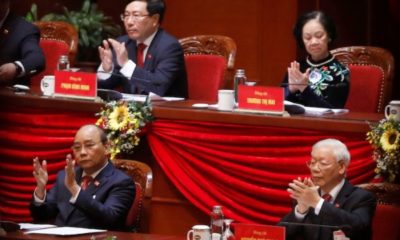
 Politics & Economy4 years ago
Politics & Economy4 years agoVietnam’s unresolved leadership question
-
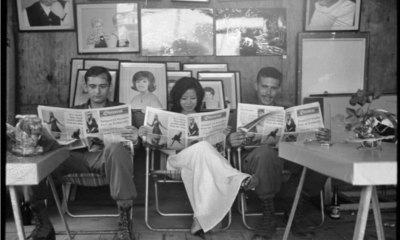
 Politics & Economy1 year ago
Politics & Economy1 year agoRethinking History and News Media in South Vietnam
-

 Society & Culture5 years ago
Society & Culture5 years agoPandemics and Morality: Lessons from Hanoi
-
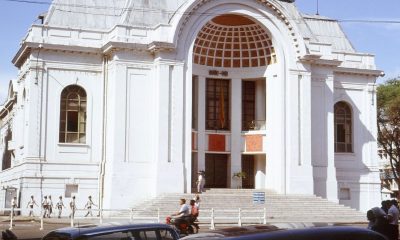
 ARCHIVES5 years ago
ARCHIVES5 years agoDemocracy in action: The 1970 Senatorial elections in the Republic of Vietnam (Part 1)
-
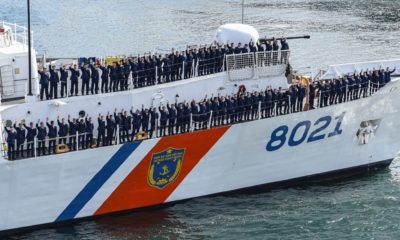
 Politics & Economy4 years ago
Politics & Economy4 years agoThe Limit to U.S.-Vietnam Security Cooperation
-
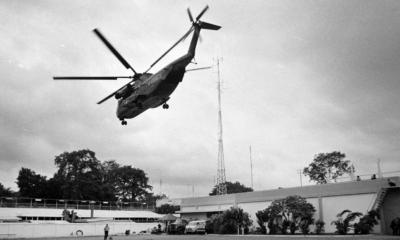
 After 19751 year ago
After 19751 year ago“The Vietnam War Was an Unwinnable War”: On Factuality and Orthodoxy
-
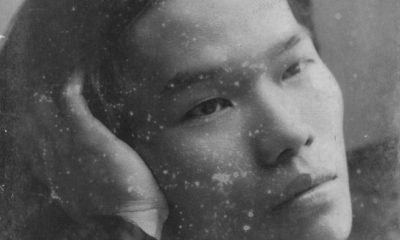
 Politics & Economy5 years ago
Politics & Economy5 years agoNational Shame: How We (Americans) can learn from Nguyễn An Ninh
-
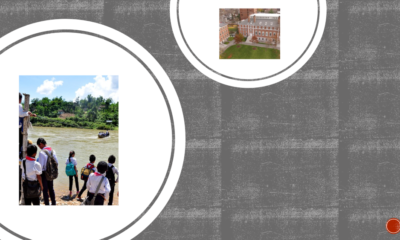
 Politics & Economy4 years ago
Politics & Economy4 years agoUS-Vietnam Partnership must Prioritize Vietnamese Education


